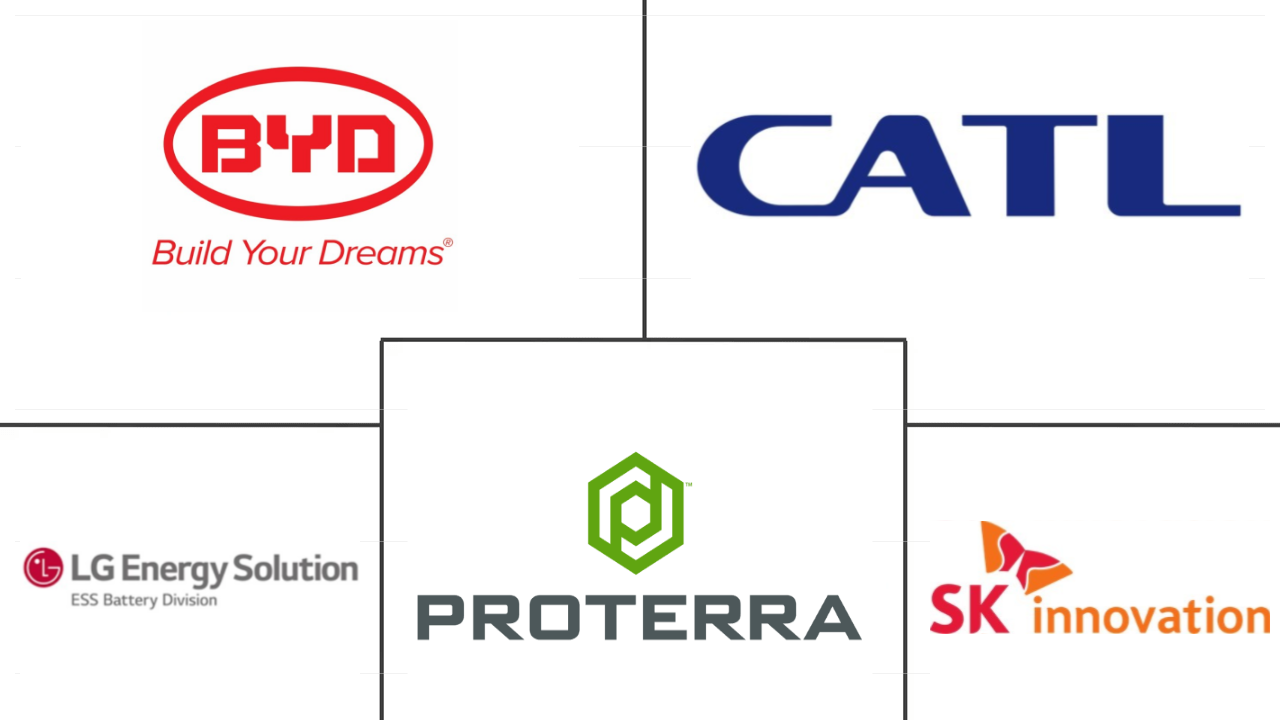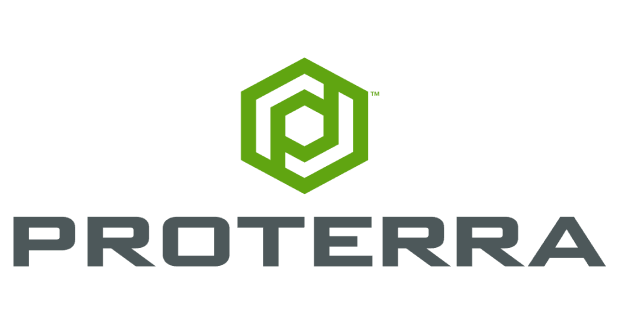Market Size of us electric bus battery pack Industry
| Icons | Lable | Value |
|---|---|---|
|
|
Study Period | 2017 - 2029 |
|
|
Market Size (2024) | USD 46.23 Million |
|
|
Market Size (2029) | USD 194 Million |
|
|
Largest Share by Propulsion Type | BEV |
|
|
CAGR (2024 - 2029) | 33.22 % |
|
|
Fastest Growing by Propulsion Type | BEV |
|
|
Market Concentration | High |
Major Players |
||

|
||
|
*Disclaimer: Major Players sorted in no particular order |
US Electric Bus Battery Pack Market Analysis
The US Electric Bus Battery Pack Market size is estimated at 46.23 million USD in 2024, and is expected to reach 194 million USD by 2029, growing at a CAGR of 33.22% during the forecast period (2024-2029).
46.23 Million
Market Size in 2024 (USD)
194 Million
Market Size in 2029 (USD)
43.00 %
CAGR (2017-2023)
33.22 %
CAGR (2024-2029)
Largest Segment by Propulsion Type
100 %
value share, BEV, 2023
BEVs lead the US electric bus battery pack market, driven by pollution reduction, quieter operations, and promoting sustainable transportation solutions for the future.
Largest Segment by Battery Chemistry
58.81 %
value share, NMC, 2023
NMC batteries dominate due to safety, long cycle life, low cost, and affordability making them a more affordable option for electric bus manufacturers in the US.
Largest Segment by Battery Form
60.66 %
value share, Cylindrical, 2023
Cylindrical batteries are often favored for their ease of integration into bus chassis and efficient space utilization makes these batteries useful in buses in Canada.
Leading Market Player
51 %
market share, Proterra Operating Company Inc., 2022

Proterra has a strong presence in the United States market, and it has delivered over 1,000 electric buses to cities and transit agencies across the country.
Largest Segment by Capacity
66.97 %
value share, 40 kWh to 80 kWh, 2023
This capacity range offers a balance between the driving range and weight considerations, ensuring optimal performance and operational efficiency for electric buses.
Rising demand and robust government backing propel the adoption of battery electric buses in the United States
- From 2017 to 2023, electric bus sales and adoption surged in the US. A Bloomberg NEF report highlighted that in 2020, battery electric buses (BEBs) constituted 16% of all new bus sales, a significant jump from a mere 1% in 2015. In the same year, California, New York, and Washington emerged as the leading states for electric bus uptake, collectively accounting for 57% of the national sales. The National Renewable Energy Laboratory (NREL) noted that the US had around 2,200 electric buses in operation in 2017, a figure that swelled to over 5,500 by 2020.
- A key driver behind the electric bus surge is the mounting demand for cleaner and sustainable transportation. Driven by ambitious climate targets, numerous cities and states have ramped up government funding and incentives to encourage the adoption of battery electric vehicles. As battery costs decline, BEBs are becoming increasingly cost-competitive with their diesel counterparts. Governments are also enacting regulations to spur electric bus adoption. For instance, the California Air Resources Board aims to transition all transit buses in the state to zero-emission vehicles by 2040.
- Projections indicate that by 2030, electric buses will make up over 50% of new bus sales in the US. Major North American cities like New York City, Los Angeles, and Vancouver have already embarked on the electric bus transition. Electric buses are poised to become more efficient and economical as battery technology advances. The burgeoning network of charging stations, catering to the rising fleet of electric buses, may further fuel the demand for these vehicles across the region.
US Electric Bus Battery Pack Industry Segmentation
BEV, PHEV are covered as segments by Propulsion Type. LFP, NCA, NCM, NMC, Others are covered as segments by Battery Chemistry. 15 kWh to 40 kWh, 40 kWh to 80 kWh, Above 80 kWh, Less than 15 kWh are covered as segments by Capacity. Cylindrical, Pouch, Prismatic are covered as segments by Battery Form. Laser, Wire are covered as segments by Method. Anode, Cathode, Electrolyte, Separator are covered as segments by Component. Cobalt, Lithium, Manganese, Natural Graphite, Nickel are covered as segments by Material Type.
- From 2017 to 2023, electric bus sales and adoption surged in the US. A Bloomberg NEF report highlighted that in 2020, battery electric buses (BEBs) constituted 16% of all new bus sales, a significant jump from a mere 1% in 2015. In the same year, California, New York, and Washington emerged as the leading states for electric bus uptake, collectively accounting for 57% of the national sales. The National Renewable Energy Laboratory (NREL) noted that the US had around 2,200 electric buses in operation in 2017, a figure that swelled to over 5,500 by 2020.
- A key driver behind the electric bus surge is the mounting demand for cleaner and sustainable transportation. Driven by ambitious climate targets, numerous cities and states have ramped up government funding and incentives to encourage the adoption of battery electric vehicles. As battery costs decline, BEBs are becoming increasingly cost-competitive with their diesel counterparts. Governments are also enacting regulations to spur electric bus adoption. For instance, the California Air Resources Board aims to transition all transit buses in the state to zero-emission vehicles by 2040.
- Projections indicate that by 2030, electric buses will make up over 50% of new bus sales in the US. Major North American cities like New York City, Los Angeles, and Vancouver have already embarked on the electric bus transition. Electric buses are poised to become more efficient and economical as battery technology advances. The burgeoning network of charging stations, catering to the rising fleet of electric buses, may further fuel the demand for these vehicles across the region.
| Propulsion Type | |
| BEV | |
| PHEV |
| Battery Chemistry | |
| LFP | |
| NCA | |
| NCM | |
| NMC | |
| Others |
| Capacity | |
| 15 kWh to 40 kWh | |
| 40 kWh to 80 kWh | |
| Above 80 kWh | |
| Less than 15 kWh |
| Battery Form | |
| Cylindrical | |
| Pouch | |
| Prismatic |
| Method | |
| Laser | |
| Wire |
| Component | |
| Anode | |
| Cathode | |
| Electrolyte | |
| Separator |
| Material Type | |
| Cobalt | |
| Lithium | |
| Manganese | |
| Natural Graphite | |
| Nickel | |
| Other Materials |
US Electric Bus Battery Pack Market Size Summary
The US Electric Bus Battery Pack Market is experiencing significant growth, driven by the increasing demand for sustainable and cleaner transportation solutions. The market is characterized by a robust adoption of battery electric buses (BEBs), with states like California, New York, and Washington leading the charge. The transition to electric buses is supported by government incentives, declining battery costs, and regulatory measures aimed at reducing emissions. As a result, BEBs are becoming more competitive with traditional diesel buses, and projections indicate a substantial increase in their market share over the coming years. The expansion of charging infrastructure further supports this growth, making electric buses a more viable option for urban transit systems.
The market is highly consolidated, with major players such as BYD Company Ltd., Contemporary Amperex Technology Co. Ltd. (CATL), LG Energy Solution Ltd., Proterra Operating Company Inc., and SK Innovation Co. Ltd. dominating the landscape. These companies are pivotal in driving innovation and meeting the rising demand for electric bus battery packs. The US market is also witnessing strategic partnerships and joint ventures aimed at enhancing production capabilities and expanding market presence. As the electric vehicle market continues to evolve, the US Electric Bus Battery Pack Market is poised for substantial growth, reflecting broader trends in the automotive industry towards electrification and sustainability.
US Electric Bus Battery Pack Market Size - Table of Contents
-
1. MARKET SEGMENTATION (includes market size in Value in USD and Volume, Forecasts up to 2029 and analysis of growth prospects)
-
1.1 Propulsion Type
-
1.1.1 BEV
-
1.1.2 PHEV
-
-
1.2 Battery Chemistry
-
1.2.1 LFP
-
1.2.2 NCA
-
1.2.3 NCM
-
1.2.4 NMC
-
1.2.5 Others
-
-
1.3 Capacity
-
1.3.1 15 kWh to 40 kWh
-
1.3.2 40 kWh to 80 kWh
-
1.3.3 Above 80 kWh
-
1.3.4 Less than 15 kWh
-
-
1.4 Battery Form
-
1.4.1 Cylindrical
-
1.4.2 Pouch
-
1.4.3 Prismatic
-
-
1.5 Method
-
1.5.1 Laser
-
1.5.2 Wire
-
-
1.6 Component
-
1.6.1 Anode
-
1.6.2 Cathode
-
1.6.3 Electrolyte
-
1.6.4 Separator
-
-
1.7 Material Type
-
1.7.1 Cobalt
-
1.7.2 Lithium
-
1.7.3 Manganese
-
1.7.4 Natural Graphite
-
1.7.5 Nickel
-
1.7.6 Other Materials
-
-
US Electric Bus Battery Pack Market Size FAQs
How big is the US Electric Bus Battery Pack Market?
The US Electric Bus Battery Pack Market size is expected to reach USD 46.23 million in 2024 and grow at a CAGR of 33.22% to reach USD 193.98 million by 2029.
What is the current US Electric Bus Battery Pack Market size?
In 2024, the US Electric Bus Battery Pack Market size is expected to reach USD 46.23 million.

